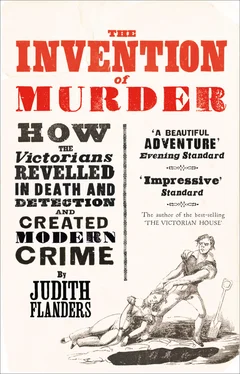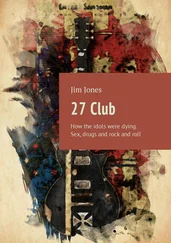The novel was quickly acclaimed as being by an ‘author in the very front rank of modern novelists’, but it was not recognized that the author had used reality as the basis for her (or, as this reviewer thought, his) art. Even the Manchester Guardian failed to recognize the case it had reported so thoroughly a decade earlier. Instead, it says that while Mary Barton is well written and well constructed, ‘the authoress has [?erred – semi-illegible] against truth, in matters of fact’. Her tale of murder was a libel on the workers, it went on, because ‘they never committed a murder under any such circumstances’, and a libel on the owners, ‘who have never been exceeded … in acts of benevolence and charity’.
While Thomas Ashton may have been forgotten, Mary Barton’s story became hugely popular among the working classes. Three plays, all at minor theatres, were based on Mrs Gaskell’s novel, and two scripts survive. In the script of the 1850 version, the Examiner of Plays has scored through all the political references – gone is the workers’ delegation to Parliament, and no longer is Barton a Chartist delegate. Gone too is the scene where the workers conspire to kill Carson (which must have made the plot difficult to follow), and in the final courtroom scene, respect for sacred personages meant that the swearing-in of witnesses takes place in dumbshow. After the acquittal of James (not Jem in this version), the dying Barton begs Carson: ‘Oh sir, say you forgive me the anguish I have caused you. I care not for death, but oh man forgive me the trespass I have done thee. I die, oh. The world fades from me, a new one opens to you, James and Mary,’ and the play ends with a final tableau.
For many theatres, spectacle was the essential ingredient, with various types of lighting and stage effects used to create the required ‘sensation-scene’, the high point of the evening, full of special effects and new technology. The stage manager at the Britannia reminded himself of what was needed for one scene:
Ring Down [curtain] when shower of fire out.
Screams & yells & all sorts of noises. Coloured fires burning.
Braces falling on sheet iron. [clanging noises of battle]
… sparks from Dragon Mouth.
… Red Lights full up.
Quite how realistic these effects were is difficult to judge. In 1871, a melodrama at the same theatre had a scene in which the heroine, trapped on an ice floe with the villain, is rescued by a passing steamer. This sounds technically astonishing, until one reads the stage manager’s diary entries:
21 AUGUST: ‘This night our large steam-ship in the last scene … stuck … on the stage midway & would not come down.’
22 AUGUST: ‘This night our large steam-ship broke through the stage, & stuck fast mid-way.’
23 AUGUST: ‘This night our large steam-ship broke through a plank at the back of the stage and would not come any further … on Tuesday night, the wheels caught in the shaking waters & clogged & wouldn’t come down.’
25 AUGUST: ‘Tonight it stuck at the back of the stage & would not come forward at all.’
26 AUGUST: ‘Tonight it broke through the Vampire Trap!’
In Mary Barton, or, The Weavers’ Distress at the Grecian Saloon in Shoreditch in 1861, the high point was the sensation-scene in which the workers set Carson’s mill alight, and Jem roars in to rescue the trapped Henry. Then Mary has a dramatic speech – ‘I see naught but Jem, a dying man on the gallows. I hear naught but his groans ringing in my ears’ – Will arrives in the courtroom on cue and the drama ends with a rousing speech from the judge – ‘I tell you, that you are bound to give the Prisoner the full Benefit of the slightest doubts you may have on your minds, such is the Law of England, such is the Law of humanity.’ – and Barton’s revelation that it was not he who killed Carson after all, but another character who never appears in the play, and is anyway dead: a murder where no one is to blame.
It was Dion Boucicault (1820–1890) who returned Mrs Gaskell’s story to the middle classes. The Long Strike (1866) followed Boucicault’s great success, The Colleen Bawn, another play based on a murder (see pp.130–33), and he went back to the elements that had worked for him in the past. The fire that had thrilled the Grecian audiences is gone, but Boucicault knew better than to deprive his audience of a sensation-scene. He himself played Johnny Reilly, the renamed Will. When his captain refuses him permission to go ashore, Reilly cries, ‘Jane [the Mary character in this play] has called me back, and back I’ll go,’ and ‘goes to the window, throws out coat and hat, takes stage to foot lights, runs up, springs through window, disappears’. In Act IV comes the great innovation. Jane no longer walks to Liverpool – that is far too old-fashioned. Instead, she and the lawyer Mr Moneypenny plan to send a telegram from the ‘Telegraph Office – Messages sent to all parts of the United Kingdom’. They arrive, only to find that the line is closed for the night. Much still needed to be explained to the audience about this miracle of the modern world, so the clerk laboriously spells it out: ‘The telegraph is a private enterprise, and maintained for profit. The business coming in after nine o’clock would not pay, except on the main lines.’ Moneypenny ratchets up the drama: ‘. that wire was the thread on which the lad’s life was suspended, and it fails her’. The operator is sympathetic and says maybe, just maybe, they can get through. The tension is heightened by the slow relaying of and replying to the messages coming and going, but then – miraculously – a signal!
Boucicault, a great admirer of French theatre (or, as his many enemies had it, a frequent plagiarizer of French plays), may have known of a play Dickens had seen in Paris ten years before. La Rentrée à Paris was, said Dickens, barely a play at all, but while ‘There is nothing in the piece. it was impossible not to be moved and excited by the telegraph part,’ where, in a Paris railway station, the crowds wait for the soldiers returning from the Crimea. There is an electric telegraph office to one side, and a ‘marquis’ offers:
‘Give me your little messages, and I’ll send them off.’ General rush … ‘Is my son wounded?’ ‘Is my brother promoted?’ etc. etc. Last of all, the widowed mother. ‘Is my only son safe?’ Little bell rings. Slip of paper handed out. ‘He was first upon the heights of Alma.’ General cheer. Bell rings again, another slip of paper handed out. ‘He was made a sergeant at Inkermann.’ Another cheer. Bell rings again, another slip of paper handed out. ‘He was made colour-sergeant at Sebastopol.’ Another cheer. Bell rings again, another slip of paper handed out. ‘He was the first man who leaped with the French banner on the Malakhoff tower.’ Tremendous cheer. Bell rings again, another slip of paper handed out. ‘But he was struck down there by a musket-ball …’ Mother abandons all hope; general commiseration; troops rush in. son only wounded, [enters] and embraces her.
Boucicault’s version was similarly effective, so much so that at the end of the century some variety bills were still running the scene on its own, amputated from the rest of the play.
‘Amputate’ is the key word for the next horror that titillated the reading public. On 28 December 1836, a labourer walking past a building site on London’s Edgware Road saw a sack tucked under a flagstone propped at the side of the road. Upon investigation it proved to contain the body of a woman ‘in a horridly mutilated state’. When the report said ‘body’, it meant ‘body’: it was a torso (complete with arms), packed in with some towelling, a child’s dress and a piece of shawl. No identification could be made, and nothing further happened until 6 January 1837, when a lock-keeper at Regent’s Canal lock in Stepney, in the East End of the city, found his gates blocked. He felt around with his boat-hook and, to his horror, pulled up a human head. One of the eyes ‘was quite cut out, by means of a blunt instrument’, and the earlobes were slit, as though earrings had been torn out. The head was taken to Paddington workhouse, where it was judged to be a match for the torso. Both were preserved in spirits, and kept for viewing by those who were searching for missing friends or relatives. On 2 February, a pair of legs was dredged out of a bed of reeds near Coldharbour Lane, in Brixton, south of the river, wrapped in a sack on which the letters ‘eley’ and ‘erwell’ could be read.
Читать дальше












